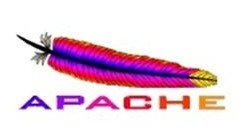 This is a step-by-step guide on how to replicate an existing MySQL server. The server is live and contains data and needs a constant backup companion.
This is a step-by-step guide on how to replicate an existing MySQL server. The server is live and contains data and needs a constant backup companion.
Many tutorials focus on how to setup replication when no data is present on the system. That’s an ideal solution if you’re building a new setup, but in case you’ve got a server that already has data present then here’s how to accomplish the this:
- setup your existing MySQL server (with data) as a Master
- export all your databases and user accounts
- create a slave and import all your data
- start replication
I’ve done this several times and always forgot to take some notes – until today. Without further ado, let’s replicate MySQL.


 Git is a superb version control system that’s tightly integrated into Apple’s Xcode. To collaborate with some coding buddies of mine we wanted to setup a central remote storage on my Plesk server so we could all contribute to the code.
Git is a superb version control system that’s tightly integrated into Apple’s Xcode. To collaborate with some coding buddies of mine we wanted to setup a central remote storage on my Plesk server so we could all contribute to the code. You may come across a duplicated counter / duplicate error in OSSEC. This can happen when you try to add an agent to the server again which was previously added (say when you had to rebuild the OSSEC Server).
You may come across a duplicated counter / duplicate error in OSSEC. This can happen when you try to add an agent to the server again which was previously added (say when you had to rebuild the OSSEC Server). I wanted to use apachetop to monitor one of my servers in real time. Much like top, apachetop reads the acces_log file in /var/logs/httpd/ and displays the results as apache processes happen.
I wanted to use apachetop to monitor one of my servers in real time. Much like top, apachetop reads the acces_log file in /var/logs/httpd/ and displays the results as apache processes happen.